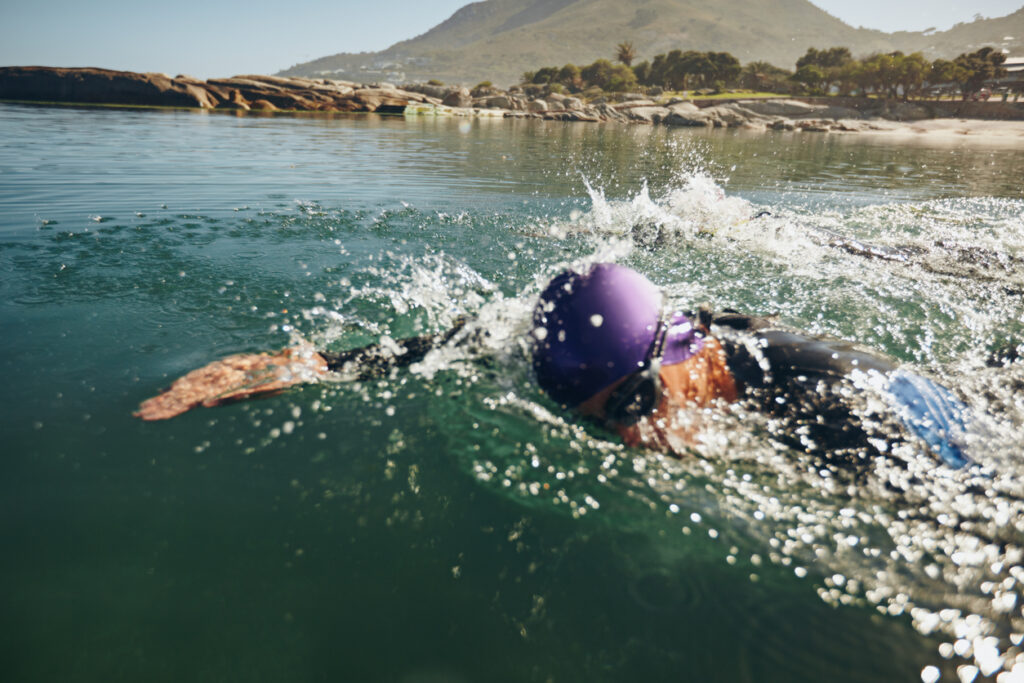by Jeff Kittmer RMT
With pools closing and wild swimming (a Brit term for lake/river swimming) frozen over, triathletes are having to become more creative in their training sessions. As an aspiring triathlete in the midst of a lockdown, I have been searching for ways to become a better swimmer without actually being in the water. One of the concepts that I came across is the importance of efficiency.
Your body position has a significant impact on the ease and speed that you move through the water. No matter how much work you put into becoming stronger, fitter and faster, you will always be held back if your body position is off. Another proficiency that can be improved upon is your underwater pull which propels you through the water. If you don’t have a sufficient ‘grip’ on the water, it’s like you’re spinning your wheels in the snow, and not really going anywhere. Once you optimize both of these, you will swim faster with less resistance, more power, and while using less energy.
Body Position
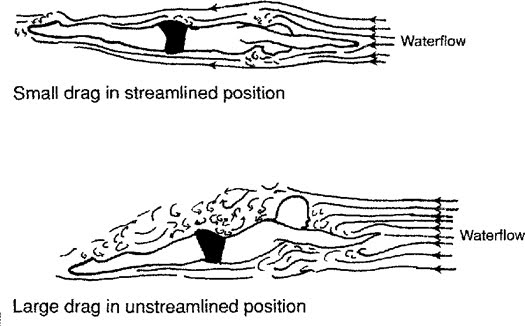
The position of your body has a significant impact on how much water resistance you create. Hence the importance of having a straight and streamline body while swimming. To find out what your body looks like while swimming, ask a friend to record you. This way you can assess your swimming technique to see where you can make improvements. Body alignment or ‘good posture’ when swimming freestyle helps to keep your body in a streamline position – which is the easiest and fastest way to move through the water. In order to maintain a straight and streamline body in the water, we need to recruit the lower core.
Floor Side Lying Rolls
The purpose of this exercise is to strengthen your connection to the lower core while being in a straight position. This exercise trains your ability to activate your core when needed. Lay on your side with your arm overhead next to your ear, legs together and straighten your body. Slowly roll forward while focusing on maintaining a straight and streamline body. Then return to the starting position. You will only need to do small rolls. If you roll too far you will use your arm and legs/feet to stabilize you instead. Practice 2 sets of 10 reps for each side.
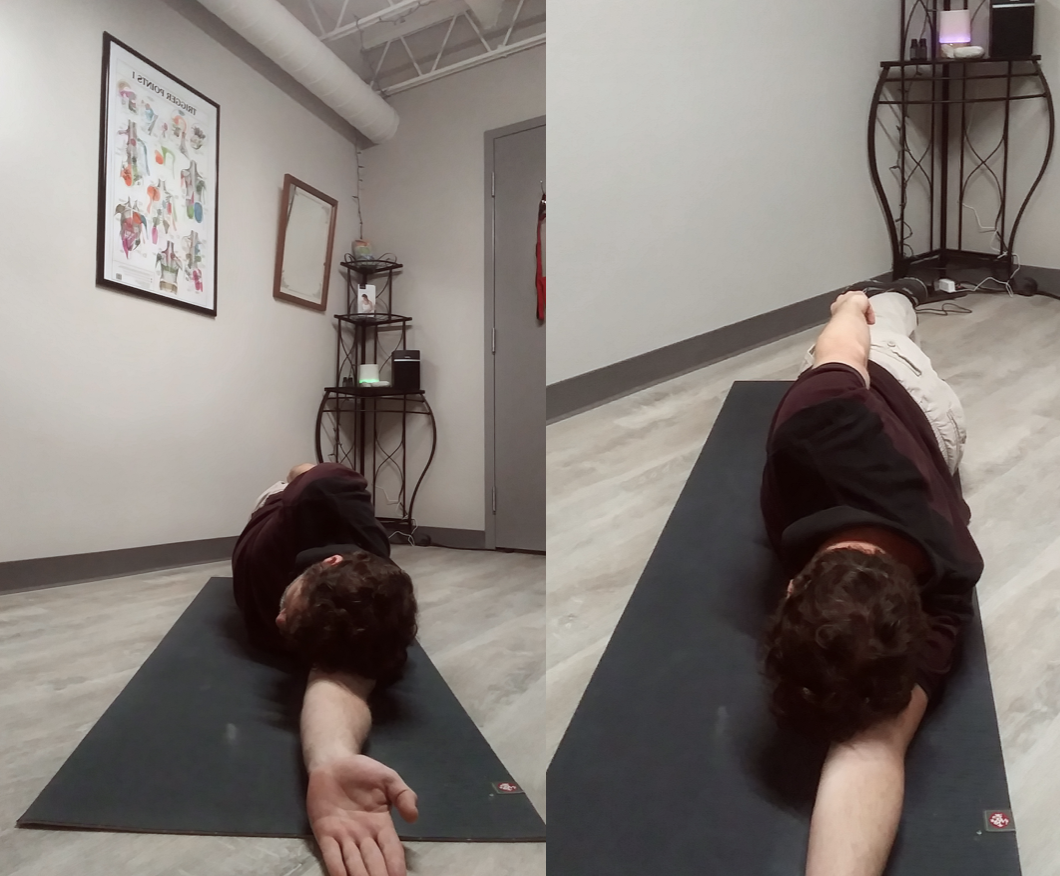
Forearm Side Plank with Rolls
Once you feel comfortable with the Side Lying Roll, let’s step it up a notch. The Side Plank Rolls are a bit more challenging but will help to build your posture and align your core muscles. Set yourself up into a forearm supported side plank position. Focus on maintaining a straight and streamline body as you roll your body forwards and then return to the starting position.
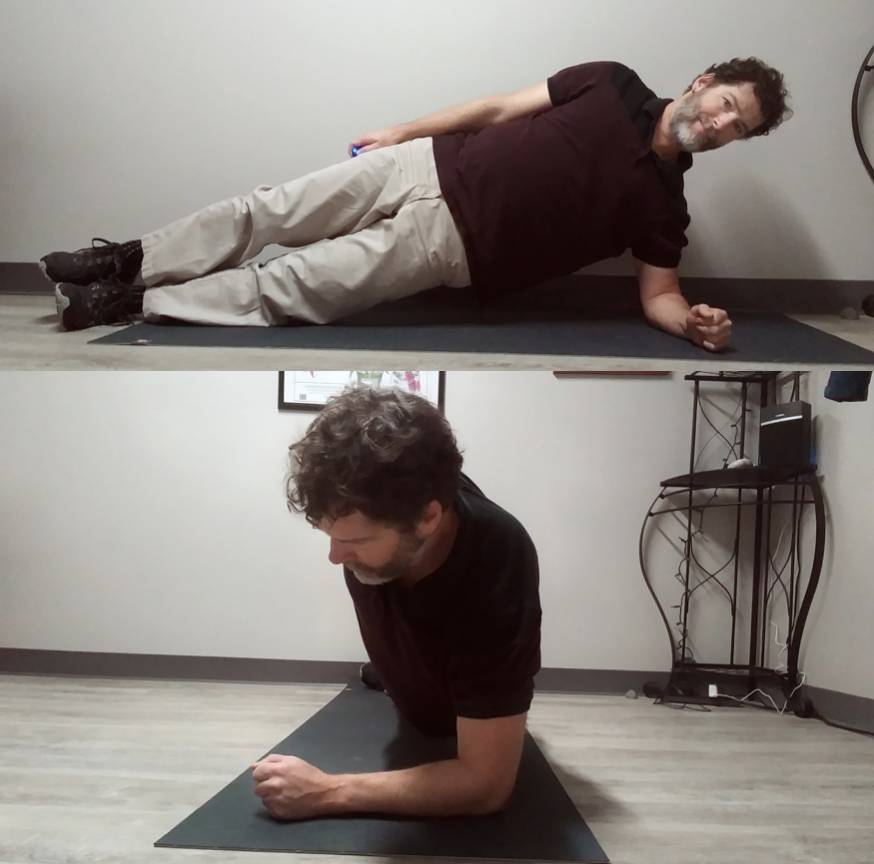
For an additional challenge, loop the RockBand Flex around your upper arm, close to the shoulder and anchor it to something secure. Or you can have a friend hold the band creating resistance. As you roll forward, you should feel the resistance from the band increasing the difficulty in maintaining a straight body. Ensure to engage your core throughout the exercise.
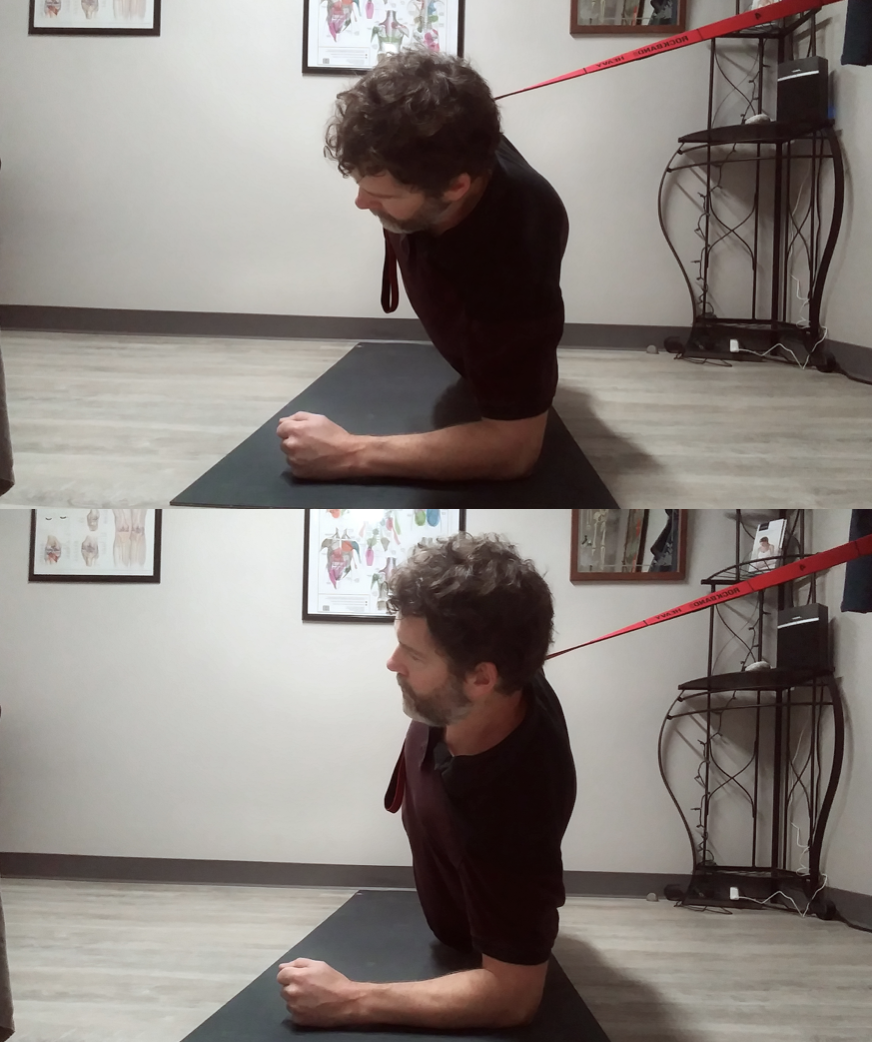
What’s the Catch?
Paddlers and swimmers have something in common, “the catch” phase in their stroke. The ‘catch’ for paddlers and swimmers is where the power is initiated during the stroke. A proper catch will help a swimmer ‘grip’ and pull through the water with more power and efficiency. Carol O’Donnell (competitive swimmer/triathlon coach) uses this analogy to describe the ‘catch’ and underwater pull. “Picture a barrel on its side in front of you, now picture yourself scooping your arm over the end of the barrel – then pull (or pushing) the barrel backward.”
Wall Catch and Pull Technique
Start off facing a wall with your toes against the wall. Take a small step back and lift an arm overhead as far as you can reach while keeping your shoulders level. When you initiate the catch and during the first two-thirds of the ‘underwater’ pull along the wall – make sure the boniest bit of your elbow is either pointing to the side of you, forward, or anywhere in between. This forms your ‘paddle’ and you will want to keep the paddle as horizontal as you can through ¾ of the stroke. Avoid pointing your elbow downward like when you do a pull up. You should feel like your shoulders are getting a good workout. If not, you’re probably dropping your elbow.
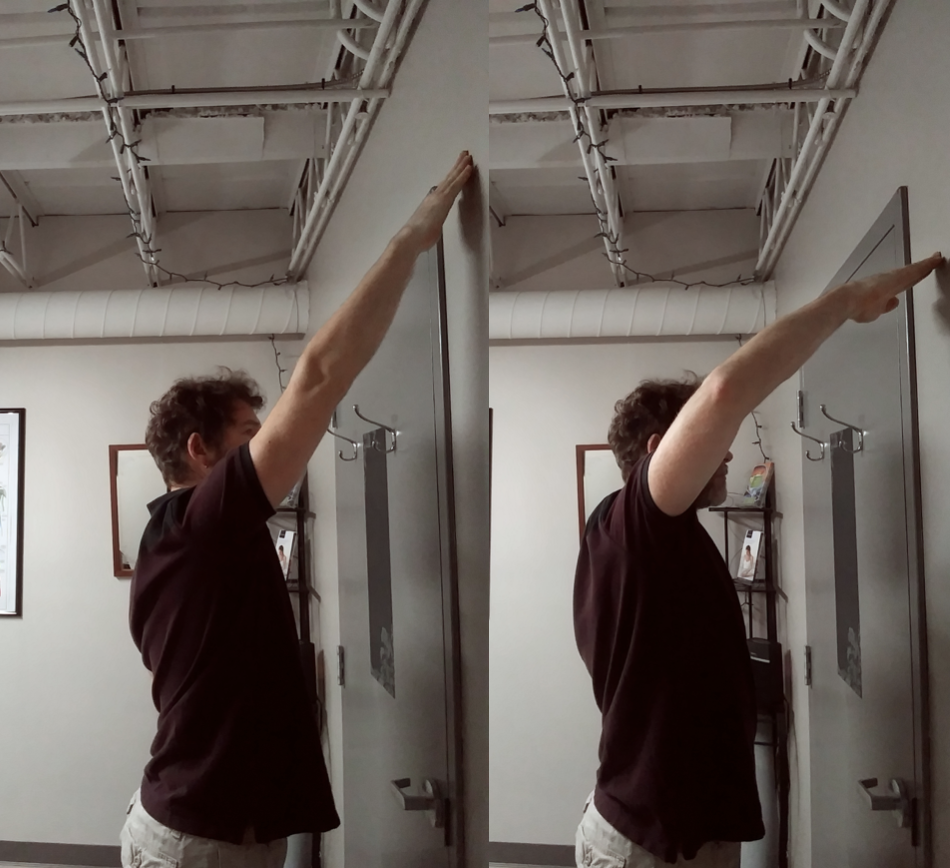
Practice 1 – 2 sets of 10 reps, slowly, with control for each arm.
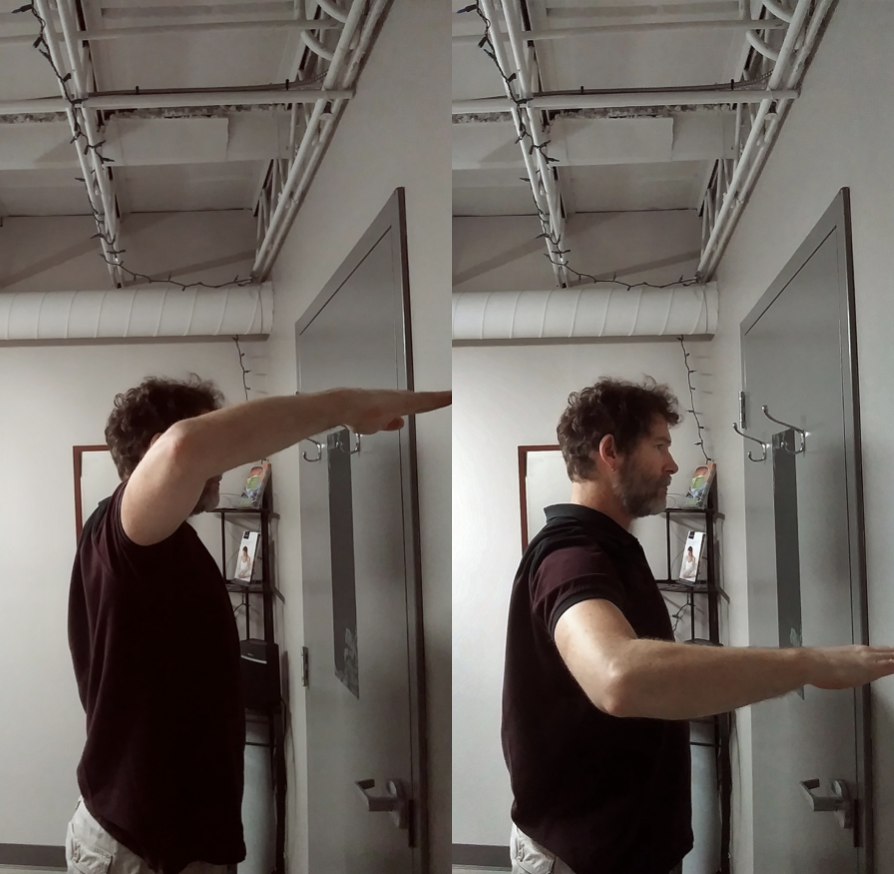
RockBand Flex Catch and Pulls
This is a continuation of the Wall Catch exercise. It is important to move with good technique prior to adding a strengthening component to any exercise. Practice the first Wall Catch technique for a while first, before moving on to adding resistance.
- Attach a RockBand Flex of appropriate tension to an anchor above chest height.
- Bend at the waist with an arm extended past your ear and clasp a loop within the band.
- Start the catch by bending your elbow and continue focusing on pointing your elbow forward/to the side throughout the pull.
- Once you become comfortable performing this with a single arm. Attach a second band and practice the exercise with both arms as though you are swimming. Catch and pull left, then right, then left, then right. Simulating your stroke cadence. Start off slowly to ensure that you are moving well, then increase the repetitions.
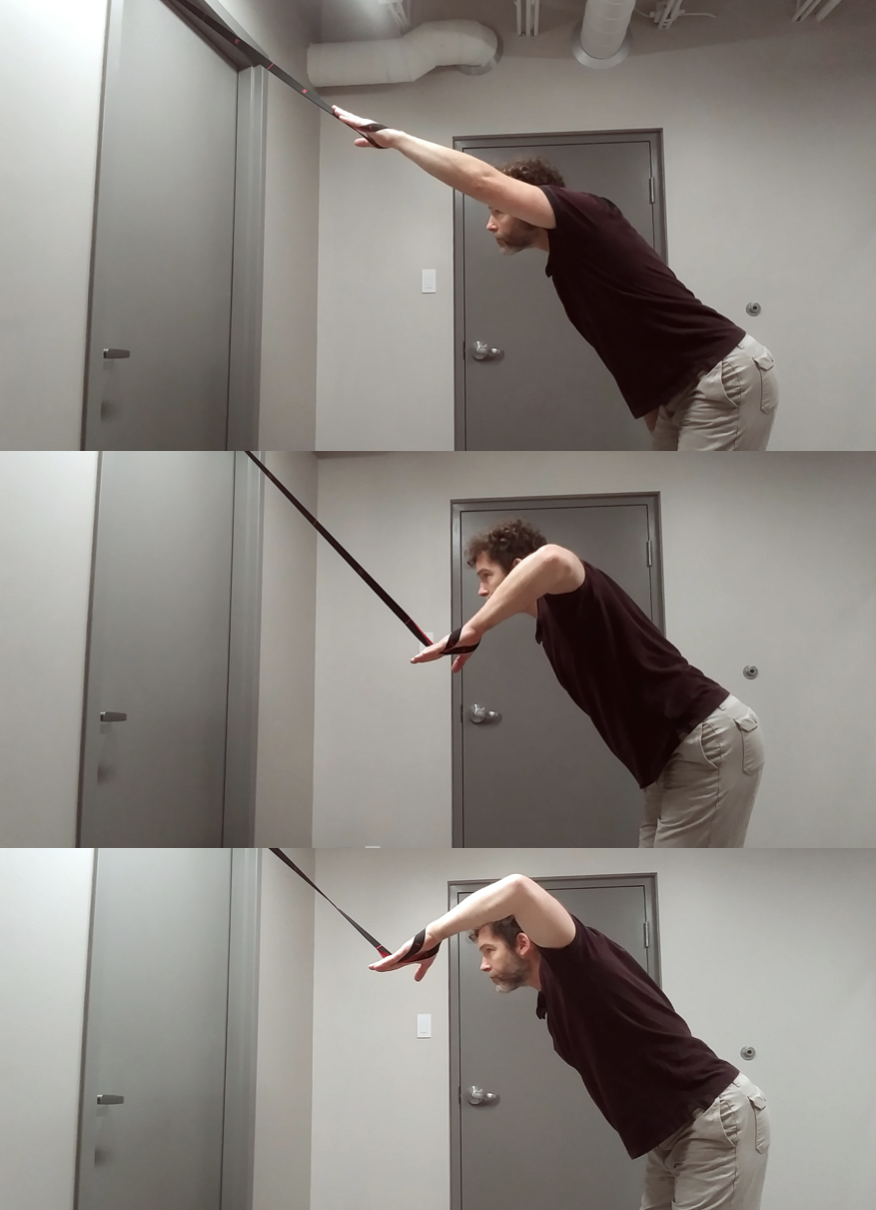
When focusing on streamlining your body position and tweaking your freestyle stroke, you need to be very mindful of your biomechanics and core activation. The change will not happen overnight. But, if you stick with it, you will notice an improvement in your critical swim speed (CSS), reduced energy consumption, and water resistance. All this will translate into more energy in reserve for the cycling and running legs of your race. Just because the pools and lakes are closed, it doesn’t mean you have to throw in the towel on swim training.
Click here to shop RockBand Flex
Click here to read Jeff’s last blog
